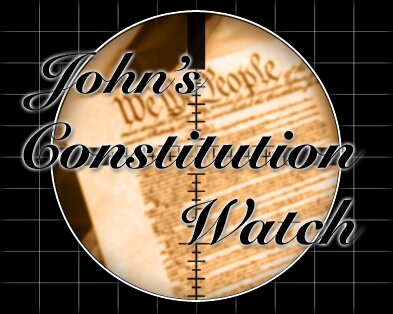Constitution Watch: The Debt Ceiling & The Constitution
July 7th, 2011In less than four weeks, America will hit the deadline for deciding to raise the debt ceiling. While it seems that the debt ceiling will be raised, the argument is over what spending cuts and budget reforms would be attached to the increase, and how to placate credit rating agencies like Moody’s and S&P that threatened to downgrade America’s perfect credit rating if adequate spending reforms were not made. However, a new proposal coming from the administration states that the debt ceiling must be raised by order of the Constitution, and that the President can pay America’s bills without congressional approval.
Some members of the political left argue that the 14th Amendment, which states that the United States’ right to incur debt “shall not be questioned”, which means that President Obama can borrow money without needing congressional approval, and instructs the Treasury to pay America’s debt regardless of Congress’ consent. In an op-ed for the Washington Post, Katrina vanden Heuvel calls this solution a “necessary” response to the impasse, and states that the President has a moral obligation to invoke the 14th Amendment if the situation warrants.
Doing so, however, would be politically risky, as Ms. vanden Heuvel admits. It would set a dangerous precedent regarding executive authority to bypass Congress on spending matters, which many in this country and in government look unfavorably upon to say the least. It would also mean Washington could borrow as much as it wanted without any checks or balances on the practice, which is what the debt ceiling is supposed to be.
It also goes without saying that it would be a very loose interpretation of the 14th Amendment. This amendment was passed as one of the “Reconstruction Amendments” and has been used along with the 13th and 15th Amendments to promote racial equality and ensure the destruction of slavery. Here is the full text of the debt clause in this amendment:
As you can see, it is referencing debts incurred during the Civil War, and it makes certain that federal funds do not go towards compensating slave owners or Confederate officers, which was the original intention of the clause. It does denote the “validity of public debt”, and how it can’t just be ignored, but it doesn’t give the President the right to go around Congress and hike the debt ceiling by himself. It can be interpreted to mean that all debts must be eventually paid, which isn’t the issue right now because nobody is calling for our debts to be invalidated.
Furthermore, if the debt ceiling doesn’t get raised, it doesn’t mean automatic default, which is a common misconception. What it really means is that payments on the debt would become the top priority for Washington above all other priorities, and deep spending cuts would be necessary (if they aren’t already) to get the country to a point where it doesn’t have a massive debt to pay off.
The Constitution was written as a check on federal excesses, not to justify them. The interpretation of this clause presented by the left would give the President a blank check to do what he wants with regards to the nation’s debt obligations, and kick our spending addiction down the road. We must deal with the debt through massive spending cuts, government reforms, and make debt ceilings in the future worth more than just arbitrary numbers. And we must respect the role of Congress, not the President, to handle spending and debt situations, which is actually mandated by the Constitution.


